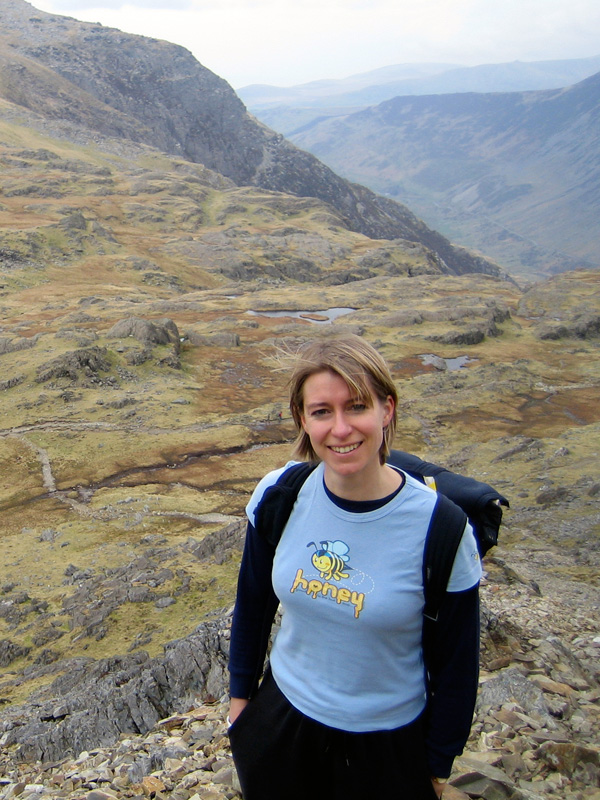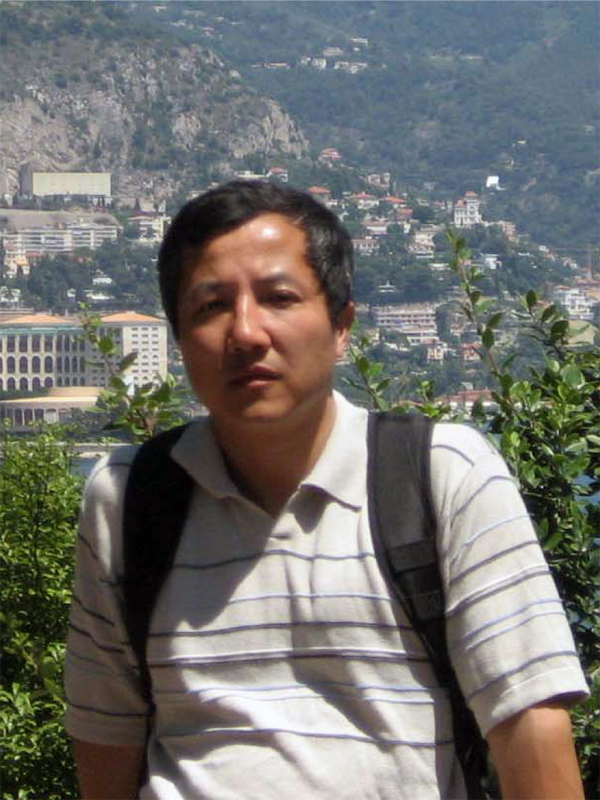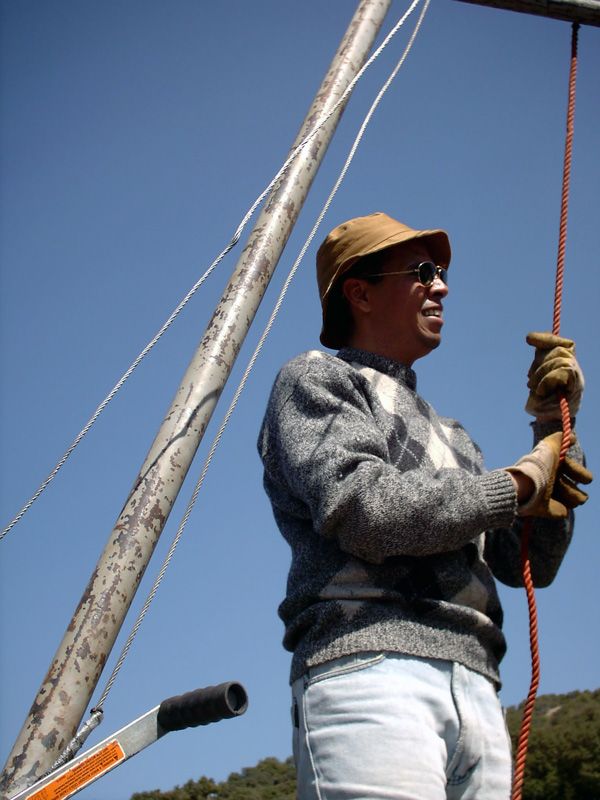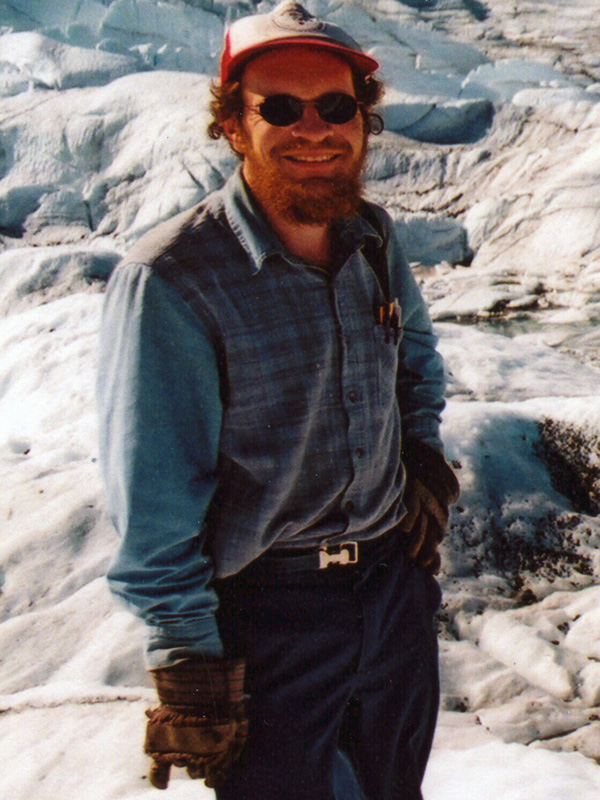HOT TOPIC 1 The Role of Paleoscience in IPCCWednesday, 8 July, 17:00-18:00Convener: Speaker: In order to better understand current global changes and to project future scenarios, knowledge of what has happened in the past is imperative. The past does not provide a prescriptive guide to the future but can form the basis for an evaluation of present day trends, future probabilities and likely human consequences. Environmental policy and decision makers worldwide are increasingly using palaeodata to guide environmental management policies. A special chapter on paleoclimate science and synthesis was included in the Working Group I contribution to the Fourth Assessment Report of the Intergovernmental Panel on Climate Change (IPCC), thereby acknowledging the vital role of palaeoscience in global change discussions. This Hot Topic talk will be given by Jonathan Overpeck, a climate system scientist at the University of Arizona. He is a professor of geosciences and of atmospheric sciences, and recently served as a Coordinating Lead Author for the Intergovernmental Panel on Climate Change (IPCC) Fourth Assessment (2007). Following the talk, there will be an open discussion of the topic. |
|
|
|
The Role of Paleoscience in IPCCJonathan T. Overpeck Paleoenvironmental observations, modeling and research are now all central cornerstones for understanding climate change past, present and future. The past does not provide strict analogs for the future but it helps provide key lessons regarding the full range of natural variability, the causes of this variability, the mechanisms of climate change, how well we can simulate these mechanisms using state-of-the-art climate models, and much more. Not only is paleoenvironmental-based knowledge now central to the Intergovernmental Panel on Climate Change (IPCC) assessment process, it is also central for policy- and decision-making at scales from the globe down to local regions. The goal of my talk is to briefly overview the IPCC framework, and to seek input into what new paleoenvironmental knowledge—that is, post summer 2006 knowledge—might be sufficiently policy-relevant for consideration for discussions in the IPCC’s upcoming Fifth Assessment. J.T. Overpeck — Institute of the Environment, University of Arizona, USA |
HOT TOPIC 2 Past Ocean Acidification: Biogenic Impacts & Climate FeedbacksThursday, 9 July, 17:00-18:00Convener: Speakers: |
|
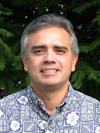 |
Carbon emissions and ocean acidification: A lesson from the pastJames Zachos, Richard Zeebe, Gerald Dickens, Clay Kelly The Paleocene-Eocene boundary (55.5 Ma) is marked by the only well-documented prehistoric example of ocean acidification on a scale comparable to that anticipated for the future. The acidification was clearly caused by the relatively rapid (<20 ka) flux of thousands of petagrams of carbon into the atmosphere and ocean, as evidenced by a global seafloor carbonate dissolution horizon, a 3‰ negative carbon isotope excursion (CIE), and global warming of >5°C (i.e., the Paleocene-Eocene Thermal Maximum (PETM)). The exact source(s) remains a mystery, although the possibilities for such a large and rapid flux of carbon are few. Viable sources include North Atlantic volcanism, desiccation and oxidation of organic rich soils, and dissociation of methane clathrates. Identifying the source of carbon as well as the maximum extent of ocean acidification (surface ocean) during the PETM requires knowledge of the mass and flux of carbon. To this end, recent research has focused on reconstructing changes in ocean carbonate chemistry (i.e., saturation state). Based on a range of dissolution proxies such as % CaCO3, % fragmentation, and % planktonic foraminifer shells (%>63 µm fraction), it has been possible to reconstruct changes in the deep sea saturation state, specifically the shoaling and recovery of the oceans calcite compensation depth and lysocline. Together with new carbon isotope data, these sediment records provide targets for simulating the effects of variable carbon fluxes and sources. To date, simulations using this observational data indicate a relatively rapid release of carbon at the onset of the PETM, though sufficiently slow (>1 ka) to prevent an extreme decline in the saturation state of the surface ocean. J. Zachos — Earth and Planetary Sciences Department, University of California, Santa Cruz, USA |
|
|
Perturbing phytoplankton: Calcifiers in a changing worldRos E.M. Rickaby, Jorijntje Henderiks, and Paul Halloran Recent evidence from rapidly accumulating sediments implies that some species of coccolithophore are increasing their calcification in response to anthropogenic change. This observation appears at odds with the paradigm view that coccolithophores reduce the ratio of calcification to photosynthesis rates and tend towards malformation with increasing levels of atmospheric carbon dioxide and decreased pH. A large factor for the decreasing ratio, is that in addition to reduced calcification, there is an increase in carbon fixation with increasing carbon dioxide. Nonetheless, the complexity of the response to changing carbon conditions by different species of coccolithophore has already highlighted that these phytoplankton which calcify under physiological control inside the cell may not be sensitive to ocean saturation in the same way as organisms that mediate the nucleation of calcification under less physiological control upon templates. The converse to the calcification paradigm is whether coccolithophores increase their photosynthetic efficiency as CO2 increases in the environment and how that would influence calcification response. In this study we have performed culture experiments with the small coccolithophore Gephyrocapsa oceanica, and the large coccolithophore Coccolithus braarudii at constant pH but with increasing and correlated concentrations of dissolved inorganic carbon (DIC), aqueous carbon dioxide, and saturation state. G. oceanica grew well under all DIC conditions with no sign of malformed coccoliths, and even thrived with elevated growth rates by 50% at 950 ppm CO2. C. braarudii was severely affected by high DIC conditions with growth rates reduced by a third, decreased coccolith and sphere size, and obvious malformation of the coccoliths. Based on these insights from the culture experiments, we shall test how different species of coccolithophore may respond in terms of calcification and photosynthesis to increasing levels of carbon in the anthropogenic ocean. R.E.M. Rickaby — Department of Earth Sciences, Oxford University, UK |
HOT TOPIC 3 Transient vs. Rapid Change in the SaharaFriday, 10 July, 17:00-18:00Convener: Speakers: The desertification of the Sahara following an early Holocene humid period is one of the clearest environmental changes of the current interglacial period. The most likely cause of the desertification was a weakening of the African monsoon forced by gradually decreasing summer insolation. Despite the fact that the forcing was gradual, various paleoclimate indicators such as lake levels, pollen, and dust suggest a more abrupt transition. This raises several important questions, such as whether feedbacks between the atmosphere and land surface could cause a rapid transition, or whether proxy records could be merely recording local, site-specific thresholds. The nature of feedbacks and thresholds in this region has important implications for future climate change. This Hot Topic session features two speakers who will present recent research on Holocene desertification in the Sahara. Brahim Damnati will present a new synthesis of lake status data for North Africa since 11 ka. His results indicate a widespread and rapid rise in lake level at the beginning of the early Holocene humid period (ca. 9 ka) and a regionally coherent, rapid fall in lake levels in the middle Holocene (ca. 6-4.5 ka). Zhengyu Liu will speak about recent modeling work related to feedbacks between precipitation and vegetation in North Africa. His results suggest that desertification was not caused by a strong positive vegetation feedback but rather by a nonlinear response of the vegetation to a precipitation threshold in the presence of strong climate variability. Following the two talks, there will be an open discussion of the topic. |
|
|
|
How much do we know about vegetation feedback in North Africa?Zhengyu Liu Large-scale vegetation feedback on climate is of critical importance not only for science but also for society, yet vegetation feedback is extremely complex to understand and difficult to assess. Despite the significant advances in our understanding of vegetation feedback and in the modeling of vegetation processes that were made in the past, many fundamental issues remain unanswered. Here, I will briefly discuss the vegetation feedback on hydroclimate over North Africa, from both the past and present perspectives. In contrast to the previously dominant thinking of a positive vegetation feedback, I argue that North Africa vegetation feedback remains poorly understood in the real world and that many further studies are needed. Z. Liu — Center for Climatic Research and Department of Atmospheric and Oceanic Sciences, University of Wisconsin-Madison, USA |
|
|
Past environmental changes during the Holocene in North Africa using lake recordsCarrie Morrill and Brahim Damnati Except in rare cases, lake status fluctuations are one of the most important and widely distributed sources of paleohydrological and paleoclimatic information for continental areas over the late Quaternary. We have compiled old, updated and new published lake status data from North African basins, in a simple cartographic form that emphasizes regional patterns of surface water availability over the Holocene (from 11 ka cal yr to the present). These maps can be used to interpret past climate and essentially past precipitation. At ca. 11 ka cal yr, many lakes began to rise. Some of them receded dramatically after 11 ka. The majority of lakes with this initial amelioration were in northeast Africa in the equatorial zone. The large perturbation occurred in northern Africa. Between 0° and 22°N, nearly all lakes were high. The water status responded first near the equator (between 0° and 10°N) and subsequently rose progressively in the Sahara and Sahel, where the response has been extended from 9.5 to 7 ka cal yr. The main period of positive hydrological conditions was recorded simultaneously in lacustrine systems in the interdunal depression and in Sebkhas. At ca. 6 ka cal yr, the lakes show a more positive water balance over northern Africa. The southern margin of the zone of wetter conditions is unchanged relative to 11 ka but evidence from two sites in the Libyan Desert suggests that the northern boundary may have been slightly further north. There is a suggestion that conditions became wetter than 11 ka in the Maghreb region. B. Damnati — Department of Earth Sciences, Abdelmalek Essaadi University, Morocco |
HOT TOPIC 4 How Abruptly Can Sea Level Rise?Saturday, 11 July, 17:00-18:00Convener: Speaker: |
|
|
|
How abruptly can sea level rise?Richard Alley, Sridhar Anandakrishnan, David Pollard, Byron Parizek Warming melts ice sheets, as shown by the history of the ice sheets in Greenland and Antarctica over ice-age cycles and over the short times covered by instrumental records, by fundamental physical understanding, and by the most physically complete new models. Any regime in which ice sheets grow with warming and shrink with cooling does not appear to be represented within the known behavior of Cenozoic ice sheets. Ice sheets generally have grown as snowfall decreased with cooling. Sea-level control on ice-sheet size, although probably real, appears weak. Thus, in a warming world, we expect ice-sheet shrinkage and sea-level rise. Most of the forcings of past ice-sheet changes have occurred on multi-millennial orbital timescales, so the reconstructed multi-millennial responses do not provide insight to maximum response rates. The onset of response to climate changes appears to have been very fast, however. The rise of ca. 20 m in 500 yr during Meltwater pulse 1A, probably with faster pulses within that rise, involved melting of more-extensive and lower-latitude ice than exists today, but perhaps weaker forcing than business-as-usual fossil-fuel burning. Thus, Meltwater pulse 1A is less instructive than we would like, providing neither an upper nor a lower bound on maximum sea-level rise in the future. Reviewing available back-of-the-envelope estimates, as well as output of sophisticated models, shows widespread agreement that 1 m sea-level rise this century, with faster rise in the future, is possible and may be likely. There is no agreement on an upper limit, which may be near the 1 m/century level or notably higher. Community meetings and other sources have identified the key research needed to narrow these uncertainties. Improved measurement and modeling of interactions among the ocean, ice shelves, ice streams, and their beds are especially important. Some of this work is ongoing. Whether resource commitment is large enough to provide usefully narrow projections for the IPCC Fifth (or Sixth?) Assessment Report(s) remains to be seen. R.B. Alley — Department of Geosciences and Earth and Environmental Systems Institute, Pennsylvania State University, USA |


